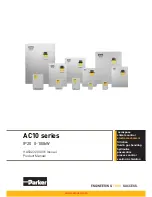
6
Risk to breathing inhalation hazard
What could happen
How to prevent it
•
Abrasive tools, such as grinders, sanders, and cut-off
tools generate dust and abrasive materials which can
be harmful to human lungs and respiratory system.
•
Always wear a face mask or respirator when using such
tools.
•
Some materials such as adhesives and tar, contain
chemicals whose vapors could cause serious injury with
prolonged exposure.
•
Always work in a clean, dry, well ventilated area.
Risk to injury
What could happen
How to prevent it
•
Tools left unattended with the air hose attached, can
be activated by unauthorized persons leading to their
injury or injury to others.
•
Remove air hose when tool is not in use and store tool
in secure location away from reach of children and or
untrained users.
•
Air tools can propel fasteners or other materials
throughout the work area.
•
Use only parts, fasteners, and accessories recommended
by the manufacturer.
•
Keep work area clean and free of clutter.
•
Keep children and others away from work area during
operation of the tool.
•
Keep work area well lit.
•
A wrench or a key that is left attached to a rotating
part of the tool increases the risk of personal injury.
•
Remove adjusting keys and wrenches before turning the
tool on.
•
Using inflator nozzles for duster applications can cause
serious injury.
•
DO NOT
use inflator nozzles for duster applications.
•
Air tools can become activated by accident during
maintenance or tool changes.
•
Remove air hose to lubricate or add grinding
attachments, sanding discs, drills, etc. to the tool.
•
Never carry the tool by the hose.
•
Avoid unintentional starting. Don’t carry an air tool which
is connected to an air hose, with your finger on the trigger.
•
Repair servicing should be done only by an authorized
service representative.
•
Air tools can cause the workpiece to move upon
contact leading to injury.
•
Use clamps or other devices to prevent movement.


































